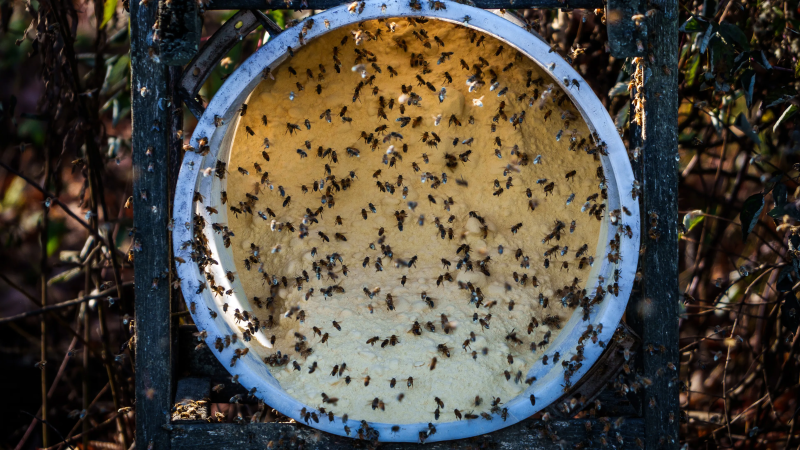How do bees make honey? A scientist breaks down this intricate process.
Honey is the sweet, sticky, delicious condiment that’s loved across the world. In 2021, the global honey industry was valued at approximately $8 billion, per Statista.
Honey is versatile, and beyond topping it off your breakfast pancakes or Greek yogurt parfait, certain types of honey, such as Manuka honey, contain antimicrobial properties that can even be used to heal wounds, studies suggest.
Bees work overtime to produce the honey that lines the shelves of your local supermarket. How exactly do they make it? Dr. Adolfo Sánchez-Blanco, an associate professor of biology at CT State-Capital, offers some insight into this intricate process.
Do bees drink their own honey?
Just in the way that humans enjoy eating honey, bees create honey to nourish their entire colony, Sánchez-Blanco says. The average beehive houses anywhere between 60,000 to 80,000 bees, according to the Australian Academy of Science.
Honey is sugar-rich — it’s used among other things to feed larvae, Sánchez-Blanco says, but it also energizes the bees’ flight muscles, according to the National Honey Board. Bees produce honey in bulk, and their stockpile is stored in the honeycombs. In the winter, when it is difficult for bees to source flower nectar, this extra honey supply sustains the colony, Sánchez-Blanco explains.

Why do bees spit out honey?
The honey production process begins when female “worker” bees consume flower nectar. What follows is a unique digestive process that, over time, enables bees to convert nectar into honey, Sánchez-Blanco explains.
Bees have a special stomach, that among biologists, is commonly referred to as the “honey stomach,” he says. When worker bees consume nectar, it gets stored in the honey stomach, where digestive enzymes get to work to transform it into glucose and fructose, Sánchez-Blanco says.
More:Healthy condiments? Yes, there is such a thing. Eight dietitian-recommended sauces.
When the bees return from the outside world to the colony, “they start passing the [digested] nectar from bee to bee” through a process of regurgitation, which helps “expose the nectar to more enzymes,” he says. After the honey has been regurgitated multiple times, the result is a “very primordial type of honey that contains a lot of water.”
How do bees make honey?
To transform the honey liquid into the viscous, sticky substance that we know honey to be, bees will first regurgitate it into the cell of the honeycomb. Then, to remove the liquid from the honey, bees will bat their wings very fast. In doing so, they will generate a current that evaporates the water content. You could equate this to almost like “using a fan,” Sánchez-Blanco says.
Afterward, bees seal the honeycombs with wax, and the honeycomb becomes a “pantry for their own consumption,” he says. Once this process is complete, the beekeeper can step in to remove the honeycomb, and start “processing the honey so that we can consume it.”
Disclaimer: The copyright of this article belongs to the original author. Reposting this article is solely for the purpose of information dissemination and does not constitute any investment advice. If there is any infringement, please contact us immediately. We will make corrections or deletions as necessary. Thank you.







